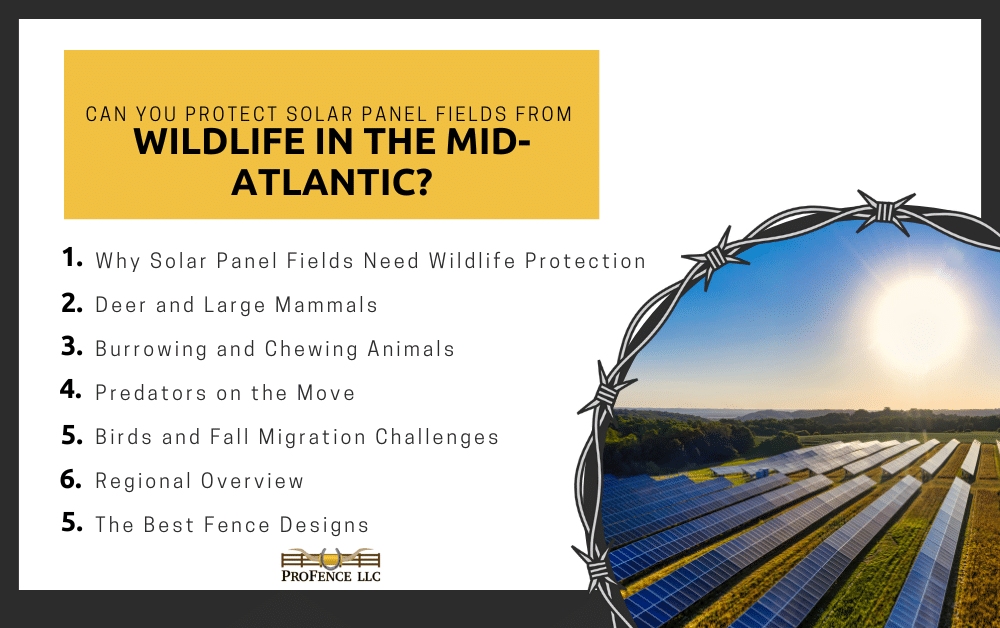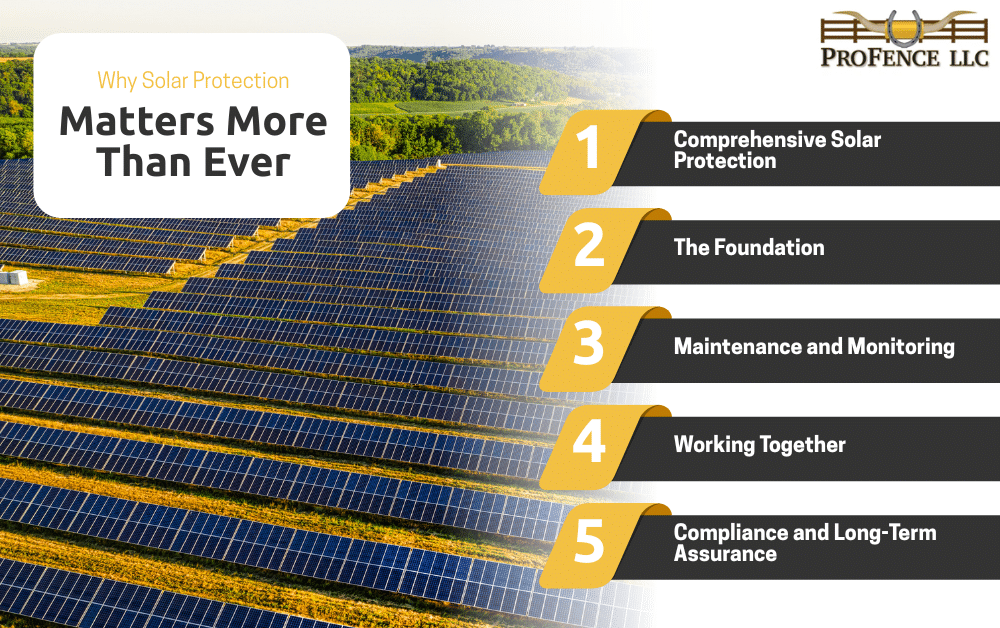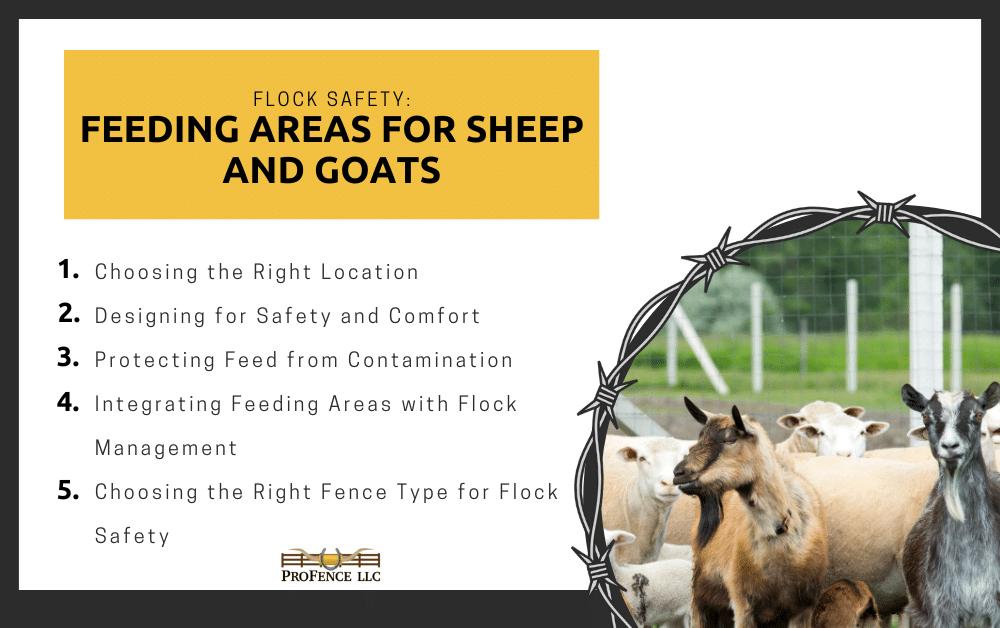The popularity of solar panel fields has been on the rise across the Mid-Atlantic, from Pennsylvania to North Carolina. As more landowners and developers invest in solar energy, protecting these valuable installations has become a top priority. While most people think of weather and equipment maintenance as the biggest threats, wildlife poses serious risks—especially during the fall season when animal activity is at its peak. From deer and raccoons to groundhogs and coyotes, animals can cause costly damage to your solar investment. In this blog, we’ll explore the most common wildlife challenges in the region and how fencing can help protect your solar panel fields.
Why Solar Panel Fields Need Wildlife Protection
Rural Locations and Wildlife Habitats
Solar panel fields are often built in rural and semi-rural areas, close to forests, farmland, and water sources. These areas are home to diverse wildlife that naturally roam through open land. The layout of solar panel fields, with large clearings and shaded spaces under panels, can attract animals. Without protection, these animals can interfere with solar operations. Over time, this can reduce efficiency and increase maintenance costs.
Seasonal Activity in Fall
Fall is one of the busiest seasons for wildlife. Deer enter rutting season, groundhogs dig burrows, and turkeys gather in flocks. This seasonal surge in activity increases the chances of animals entering a solar panel field. Animals may not be intentionally destructive, but their behaviors can cause damage. Proper fencing ensures that seasonal patterns don’t impact long-term performance in solar panel fields.
Deer and Large Mammals – The #1 Threat to Solar Panel Fields
Deer Behavior During Rutting Season
White-tailed deer, common in Pennsylvania, Maryland, Virginia, and North Carolina, are especially active in the fall. Bucks rub their antlers against posts and supports, damaging structures. They may also trample through solar panel fields, breaking wires and shifting panel angles. This type of damage can happen quickly, sometimes overnight. For solar operators, deer are the top wildlife threat to solar panel fields.
Elk and Bear Encounters
In mountain regions of West Virginia and Virginia, elk and black bears are additional concerns. Elk can cause damage similar to deer, but on a larger scale due to their size. Bears, while less frequent visitors, can break fences or disrupt equipment while foraging. These large mammals pose a different level of risk to solar panel fields that requires stronger fencing. Reinforced or electrified options may be needed in high-risk areas.
Burrowing and Chewing Animals – Small Threats, Big Damage
Groundhog and Rabbit Problems
Groundhogs and rabbits are common across New Jersey, Delaware, Pennsylvania, and Maryland. In the fall, these animals prepare for winter by digging extensive burrows. These burrows can undermine posts and expose underground conduit in solar panel fields. Rabbits also chew through low vegetation and occasionally wiring. While small, their impact on solar panel fields is serious.
Raccoons and Opossums
Raccoons and opossums add to the challenges of solar panel fields. Both are known for chewing insulation and nesting inside junction boxes. Their nocturnal habits make them difficult to catch before damage is done. In fall, their foraging increases as they prepare for colder months. Preventing access with mesh fencing is essential to deter them from damaging solar panel fields.
Predators on the Move – Coyotes and Foxes in Solar Panel Fields
Coyote Activity in the Mid-Atlantic
Coyotes are increasingly common in West Virginia, Virginia, and North Carolina. During the fall, they are more active hunters, moving closer to human environments. While they don’t directly damage panels, their digging can disrupt soil stability in solar panel fields. They may also threaten livestock in agrivoltaic solar panel fields. This makes predator-proof fencing a necessity.
Fox Behavior and Risks
Foxes are present throughout the Mid-Atlantic and share similar habits to coyotes. They are skilled diggers, which can undermine fencing if not installed with buried skirts. While foxes are less destructive than coyotes, they can still damage cables or disturb site soil in solar panel fields. Their presence near solar panel fields increases in fall as they search for food. Addressing fox risks helps keep solar panel fields stable.
Birds and Fall Migration Challenges
Wild Turkey Populations
Wild turkeys are active in Pennsylvania, West Virginia, Virginia, and North Carolina. In fall, turkeys move in larger flocks across open land. They may peck at wiring or scratch at the soil near posts, contributing to erosion in solar panel fields. Their droppings can also create sanitation issues around solar infrastructure. Large groups of turkeys can overwhelm unprotected solar panel fields.
Migrating Geese
New Jersey, Delaware, and Maryland experience large migrations of geese in fall. Geese often graze in open fields, including solar panel fields. Their droppings can reduce panel efficiency when they settle nearby. They may also damage vegetation that helps with erosion control. Fencing and deterrents reduce the impact of migrating flocks on solar panel fields.
Regional Overview – Wildlife Challenges by State
Pennsylvania and Maryland
These states face high deer populations along with active groundhogs. Rural areas are especially vulnerable in the fall. Solar panel fields here benefit from high fences and buried mesh. Raccoons also contribute to wiring damage in wooded areas.
New Jersey and Delaware
In these smaller states, smaller wildlife such as rabbits, raccoons, and geese cause the most damage. Geese migration is a particular challenge each fall. Fences with small mesh help deter these animals. Pairing fencing with deterrents improves protection for solar panel fields.
West Virginia and Virginia
West Virginia and Virginia experience challenges from both large and mid-sized animals. Deer are common, but coyotes and bears also appear. These states require reinforced fencing to handle larger animals. A combination of height and electric strands may be needed to protect solar panel fields.
North Carolina
Deer are the most active fall wildlife challenge in North Carolina. Turkeys and coyotes also add risks in rural areas. Open fields attract larger flocks and predator activity. Strong perimeter fencing ensures solar panel fields remain secure.
The Best Fence Designs for Solar Panel Fields
Fence Height and Strength
A fence at least 8 feet tall is needed to deter deer. Strong woven wire or chain-link designs work best. Height is critical in areas with heavy deer traffic. Taller fencing ensures long-term security for solar panel fields.
Mesh Size and Bottom Protection
Smaller mesh openings at the bottom (2–3 inches) block rabbits and raccoons. This prevents them from squeezing through gaps. Buried skirts stop groundhogs and other diggers. Combining both features provides complete protection for solar panel fields.
Electric Strands and Access Gates
Adding electric strands deters coyotes, foxes, and even bears in some regions. Top or bottom placement ensures they cannot climb or dig. Access gates should be lockable and wide enough for maintenance vehicles. Reinforced gates maintain site security for solar panel fields.
Conclusion: Protecting Your Solar Investment Starts with the Right Fence
Fall is a season of heightened wildlife activity, and solar panel fields in the Mid-Atlantic are especially vulnerable. From deer during rutting season to groundhogs digging burrows, protecting your investment requires proactive fencing solutions. The right fence not only prevents costly damage but also ensures your solar panel fields run efficiently year after year. If you’re investing in solar energy, don’t leave your site unprotected—contact ProFence today for expert solar fence installation across the Mid-Atlantic region.







